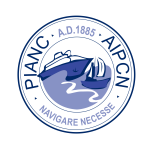Autonomous inland waterway vessel
Inland navigation is facing new challenges: Problems with the new generation of skippers and crews, an increasingly fierce competition with other modes of transport and the need to reduce the carbon footprint. These factors lead, among others, to the fact that the mode of transport inland navigation has to increase efficiency and prospectively reduce personnel requirements in order to remain competitive.
The AutoBin research project aims to develop an autonomous inland navigation vessel and to test it on a test track near Dortmund. For this purpose, a control system is being developed that is capable of steering a ship from a starting point (including departure) to a destination (including berthing) without human intervention. The control system should be able to avoid any collision with other road users, the shore and structures, while complying with all given traffic rules.
This goal is to be achieved by using the same approaches that have been successfully applied in road traffic for the development of assistance systems. The control (ship guidance) is based on neural networks, which are initially to learn how to navigate a ship as far as possible independently by machine learning on the simulator.
In order to enable and accelerate the independent learning, a suitable driving simulator must first be set up. This simulator must not only reproduce the physics of vehicle dynamics as realistically as possible, but also the visual representation of the test track and the sensor data corresponding to the test track and varying environmental conditions.
The latter is particularly relevant for object recognition, classification and tracking, not only to be able to detect the waterway, but also to recognise, track and classify other road users (pleasure boats, etc.) and other users of the waterways (swimmers, etc.).
In order to be able to represent the test route as accurately as possible, a ship will be equipped with appropriate sensor technology right at the start of the project. This serves first of all to validate the simulated sensor data during machine learning and to simulate special situations. The same sensors are later used for the operation of the control system on board.
As soon as satisfactory reliability is achieved in the simulation in the driving simulator, testing is carried out with the real, already equipped ship. First, each individual system is tested separately and then the degree of autonomous driving is gradually increased. A takeover by a human skipper is possible at any time to ensure a separate safety layer. For this purpose, a suitable human-machine interface will be developed, which simultaneously displays the intended ship behaviour and the detected behaviour of other objects to the skipper.
Information:
Project duration:
- October 2019 – September 2022
Project coordination:
- Dr.-Ing. Rupert Henn
Mail: henn@dst-org.de
Tel.: +49 203 99369-33





